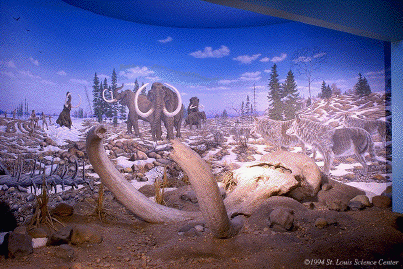

Climate is closely associated with thermoregulation because body shape and size must be suited to the climate such that body temperature is maintained. In general, large animals that live in hot climates are long-legged, lean, and lanky, whereas in colder climates, the bodies are stocky, short, and compact. The more compact the body is, the more energy it can conserve in a colder climate. The larger the animal is, the lower its surface area to volume ratio is.
In warm climates, there is an abundance of vegetation. An ample food source encourages faster growth rates in herbivores. In the Mesozoic, particularly, very high-crowned trees developed, and consequently, larger animals developed such that they could feed on the taller vegetation (Cloudsley-Thompson, 1977).



